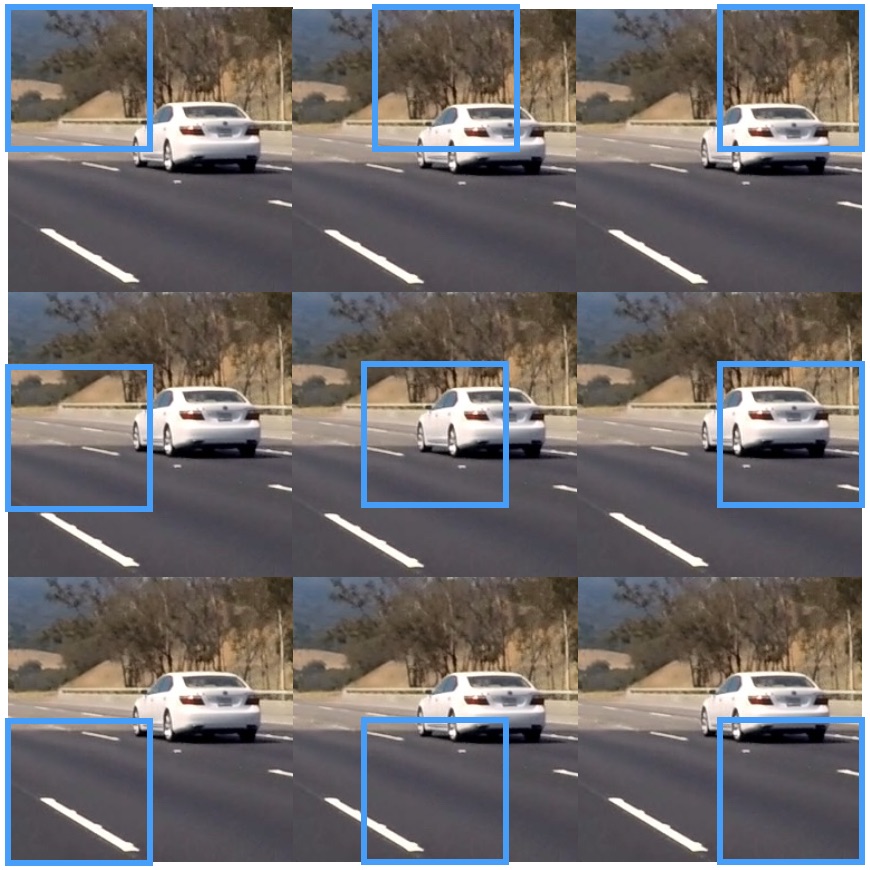32. Sliding Window Implementation
Sliding Window Implementation

In the last exercise, you saw how the number of windows scales with image size, window size, and overlap. In the project it will be useful to have a function to perform a sliding window search on an image, so let's write one! This will just be the first iteration, where you don't actually need to do anything besides plot a rectangle at each window position.
So, your goal here is to write a function that takes in an image, start and stop positions in both x and y (imagine a bounding box for the entire search region), window size (x and y dimensions), and overlap fraction (also for both x and y). Your function should return a list of bounding boxes for the search windows, which will then be passed to draw
draw_boxes()
function.
You can download the image in the below quiz here for use outside the classroom.
Start Quiz: